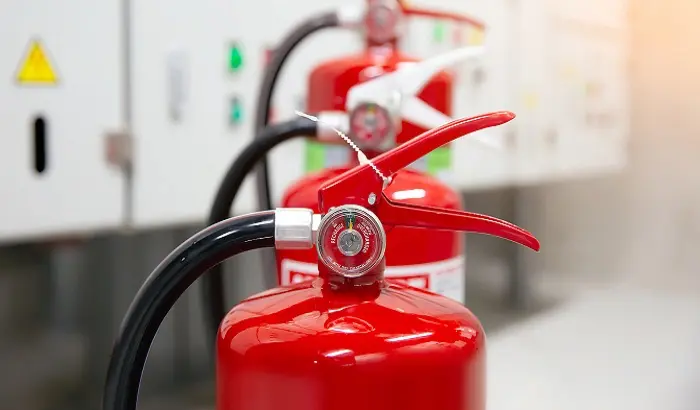Grease fires are a common hazard in kitchens, particularly when cooking with oils or fats. Understanding the appropriate type of fire extinguisher to use is crucial for ensuring safety and effective fire control. In this article, we will explore the different types of extinguishers suitable for grease fires, the proper usage techniques, and safety tips to prevent these dangerous incidents.
Understanding Grease Fires
What is a Grease Fire?
A grease fire occurs when cooking oil or fat becomes overheated and ignites. These fires can be extremely dangerous and spread rapidly if not controlled properly. They typically happen in kitchens while frying, grilling, or sautéing food.
Causes of Grease Fires
Grease fires can ignite due to various reasons, including:
Overheating Oil: Heating oil beyond its smoke point can lead to combustion.
Spills and Splashes: Oil spills on hot surfaces can easily catch fire.
Leaving Unattended Cooking: Leaving food unattended while cooking increases the risk of ignition.
The Importance of Proper Fire Extinguishing
Using the correct type of fire extinguisher for grease fires is critical. Using the wrong extinguisher can worsen the fire, spreading flames and increasing danger.
Types of Fire Extinguishers
1. Class K Fire Extinguishers
Class K extinguishers are specifically designed for fires involving cooking oils and fats. They are commonly found in commercial kitchens but are also suitable for residential use.
Mechanism: These extinguishers contain a wet chemical agent, often potassium acetate, which works by cooling and saponifying the burning oil.
Application: Best for extinguishing grease fires from deep fryers and other cooking appliances.
2. Class B Fire Extinguishers
Class B extinguishers are effective for flammable liquids, including oils and solvents. While they can be used for grease fires, they are not as effective as Class K extinguishers.
Mechanism: Class B extinguishers typically contain foam, carbon dioxide, or dry chemical agents that smother flames.
Limitations: They may not be as effective on cooking oil fires, particularly if the flames are intense.
3. Multi-Purpose Extinguishers (Class ABC)
Class ABC extinguishers can be used on fires involving ordinary combustibles (Class A), flammable liquids (Class B), and electrical equipment (Class C). While they can work on grease fires, caution is necessary.
Mechanism: These extinguishers contain a dry chemical agent, such as monoammonium phosphate, which interrupts the chemical reaction of the fire.
Cautions: Using a Class ABC extinguisher on a grease fire can cause the flames to spread, particularly if the agent is sprayed directly on the fire.
Choosing the Right Extinguisher
Factors to Consider
When selecting an extinguisher for grease fires, consider the following:
Location: For residential kitchens, a Class K extinguisher is ideal. In commercial settings, ensure compliance with local regulations.
Size: Extinguishers come in various sizes. Choose one that is appropriate for your kitchen space and easy to handle.
Accessibility: Ensure the extinguisher is easily accessible in case of an emergency. It should be mounted on the wall and within reach.
Maintenance: Regularly check your fire extinguisher for pressure and accessibility. Ensure it is serviced according to the manufacturer’s guidelines.
How to Use a Fire Extinguisher on Grease Fires
The PASS Technique
The PASS technique is a simple and effective method for using a fire extinguisher:
Pull: Pull the pin at the top of the extinguisher.
Aim: Aim the nozzle at the base of the fire.
Squeeze: Squeeze the handle to release the extinguishing agent.
Sweep: Sweep the nozzle from side to side at the base of the fire until it is extinguished.
Important Safety Tips
Never Use Water: Do not attempt to extinguish a grease fire with water, as it can cause the flames to flare up and spread.
Turn Off Heat: If safe to do so, turn off the heat source to prevent the fire from getting worse.
Cover with a Lid: If possible, cover the burning pan with a metal lid or cookie sheet to suffocate the flames.
Evacuate if Necessary: If the fire is uncontrollable, evacuate immediately and call the fire department.
Prevention Strategies
Kitchen Safety Tips
Preventing grease fires requires a proactive approach. Consider the following strategies:
Monitor Cooking: Never leave cooking food unattended. Stay in the kitchen while frying or grilling.
Maintain Equipment: Regularly check and maintain kitchen appliances, ensuring they function correctly.
Store Flammable Materials Safely: Keep flammable items, such as dish towels and paper, away from heat sources.
Use the Right Cookware: Choose cookware that is appropriate for the type of food you are preparing. Use pots and pans with a sturdy base to minimize spills.
Know When to Stop Cooking: Be aware of the smoke point of the oils you are using. Turn down the heat if you see smoke.
Conclusion
Understanding the best type of fire extinguisher for grease fires is crucial for safety in the kitchen. Class K extinguishers are the most effective choice for managing cooking oil fires, while Class B and multi-purpose extinguishers can be used with caution.
Always prioritize prevention and safety, and be prepared to respond quickly in the event of a fire. By equipping your kitchen with the right extinguisher and following safety protocols, you can significantly reduce the risk of grease fires and protect your home and loved ones.
Related topics:


